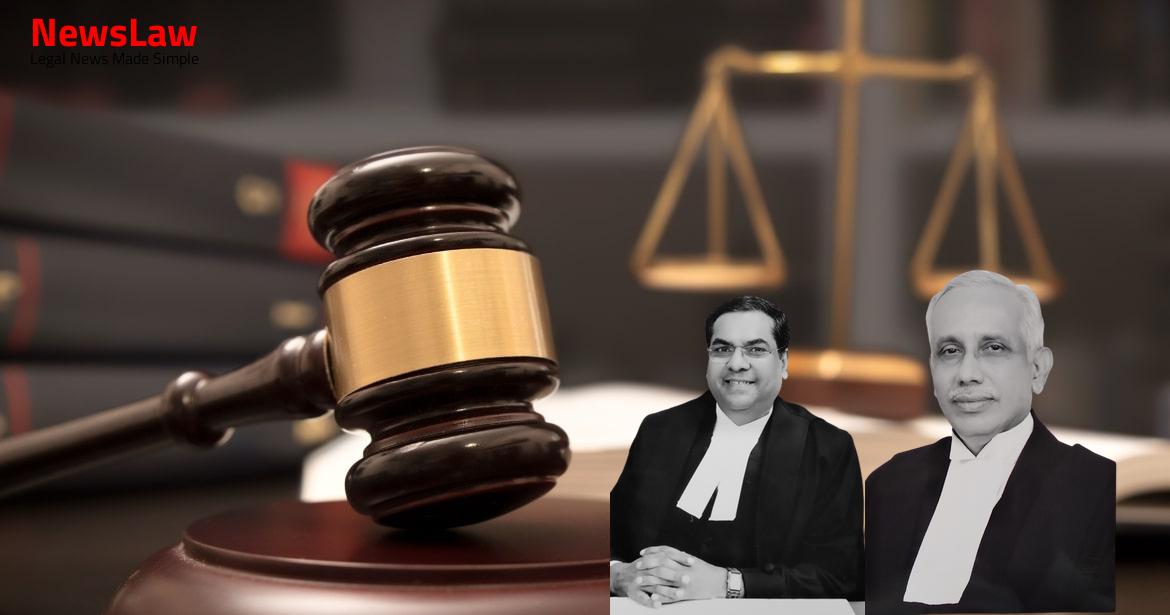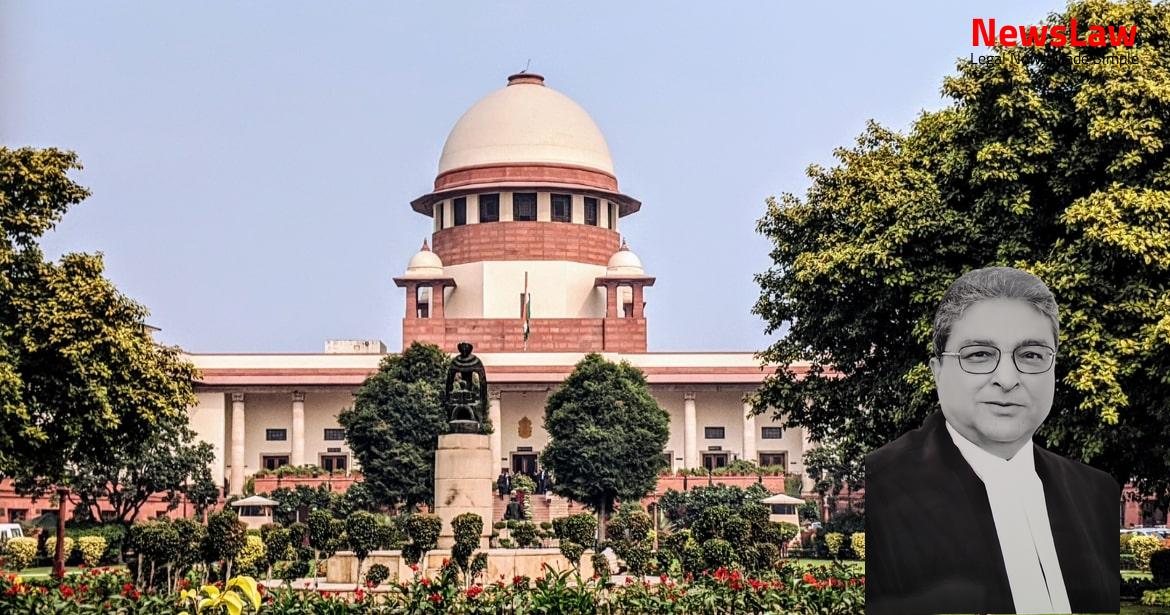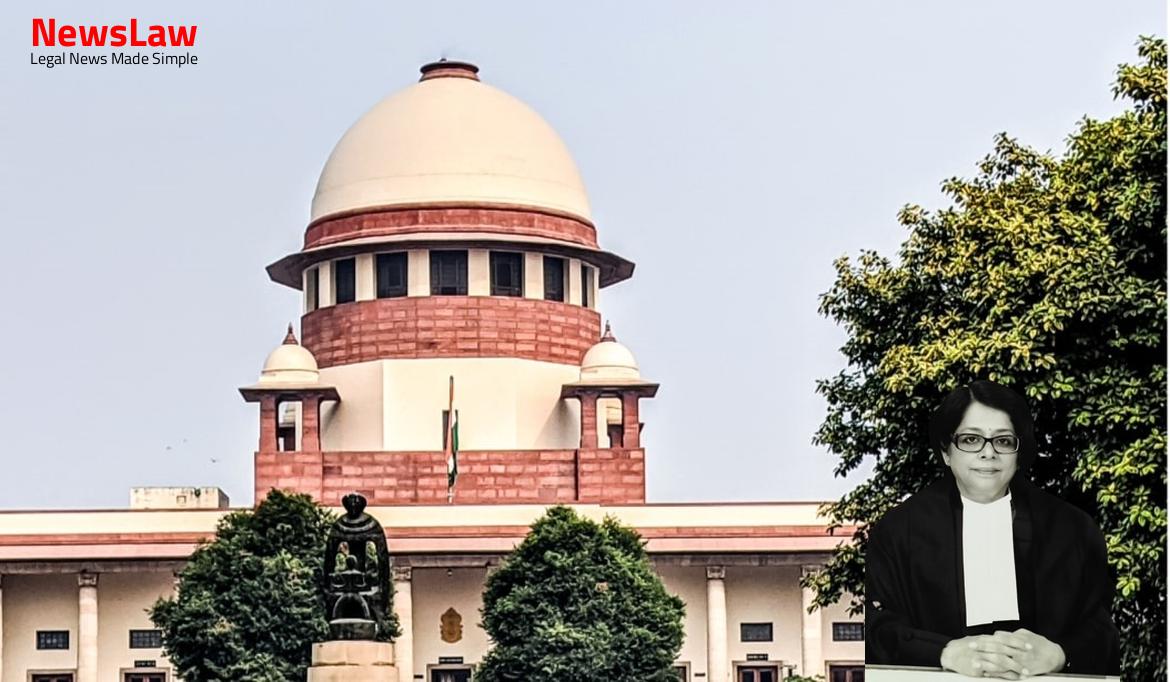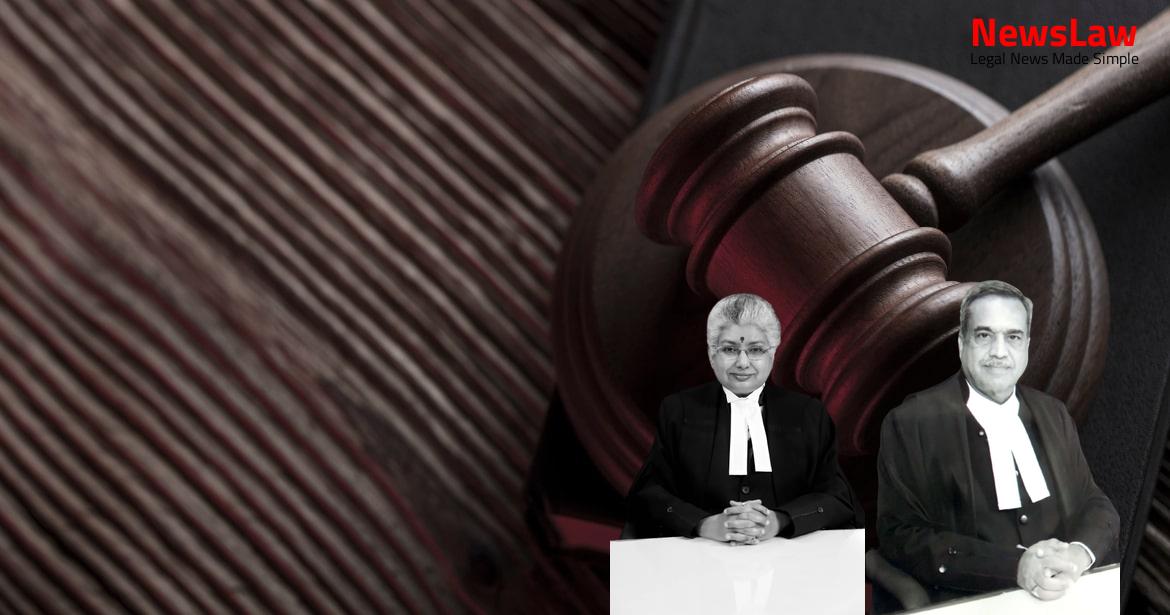In a recent legal case, the court delved deep into the analysis of circumstantial evidence to determine guilt beyond a reasonable doubt. The case sheds light on the importance of a complete chain of events in establishing the guilt of the accused. Let’s explore the court’s meticulous legal analysis in this intriguing case.
Facts
- Appellant attempted to escape custody by attacking the deceased with an iron stool on 10.09.2005
- Caught while attempting to escape by PW-1(Sub-Inspector) and PW-2 (Head Constable)
- Appeal against conviction upheld by High Court of Madras in 2008
- Appellant arrested on 09.09.2005 by PW-1 for Copyright Act offenses
- Appellant kept in custody in the same room as Head Constable Kaliappan
- Appellant appealed before the High Court against the order of conviction.
- Charge-sheet was filed against the appellant and the case was committed to the learned Additional Sessions Judge.
- Appellant pleaded not guilty and claimed trial.
- Additional Sessions Judge convicted the appellant for offences under Section 302 of IPC and Sections 224 r/w 511 of IPC.
- Appellant sentenced to life imprisonment and a fine of Rs.500/-.
- In default of fine, appellant to undergo rigorous imprisonment for one month for Section 302 IPC and one year for Section 224 r/w 511 IPC.
Also Read: Analysis of High Court’s Dismissal of Second Appeal
Arguments
- The appellant has approached the Court by way of Special Leave to Appeal (Crl.) No.4700/2009 after the Division Bench of the High Court confirmed his conviction.
- The appellant’s counsel, Mr. V. Ramasubramanian, argued that the prosecution’s case is based on circumstantial evidence and that there is no evidence pointing to the guilt of the accused beyond a reasonable doubt.
- He contends that the conviction based on assumptions is not sustainable in law.
- Mr. M. Yogesh Kanna, representing the State, supports the High Court’s judgment.
- The State Counsel argues for a holistic view rather than isolated circumstances in determining the presence of a complete chain of events.
- The court carefully considers both parties’ submissions and examines the impugned judgment and other relevant materials.
Also Read: Land Sale Agreement Appeal: Legal Consideration of Additional Evidence
Analysis
- The evidence provided by PW-7, PW-9, and PW-10 corroborates the events surrounding the accused’s attempt to escape using the deceased constable’s mobile phone.
- PW-1 arrested the accused with the deceased constable present, indicating they were together at the time.
- The accused tried to divert attention by calling the control room using the deceased constable’s phone, suggesting a premeditated plan to escape.
- PW-6’s testimony, unchallenged in cross-examination, supports the narrative of the accused attempting to frame PW-1 for the murder.
- Examination of the rough sketch (Ex.P.22) raised questions about the office premises not being included, but this does not negate PW-6’s credibility.
- An ambulance was sent based on a call from the accused about a commotion, but no injuries were found at the reported location.
- Offence took place at 2:00 a.m. when witness had left.
- Accused and deceased were alone at the time of the offence.
- Accused failed to provide a satisfactory explanation for the death of the deceased.
- The chain of circumstances has been proved beyond reasonable doubt.
Also Read: Legal Analysis in Compensation Appeal Case
Decision
- The Appeal has failed and is dismissed.
- The order of the Division Bench of the High Court in Crl. Appeal No 508 of 2007 dated 26.02.2008 is upheld.
Case Title: SHANMUGAM Vs. STATE BY INSPECTOR OF POLICE (2021 INSC 230)
Case Number: Crl.A. No.-000900-000900 / 2010



